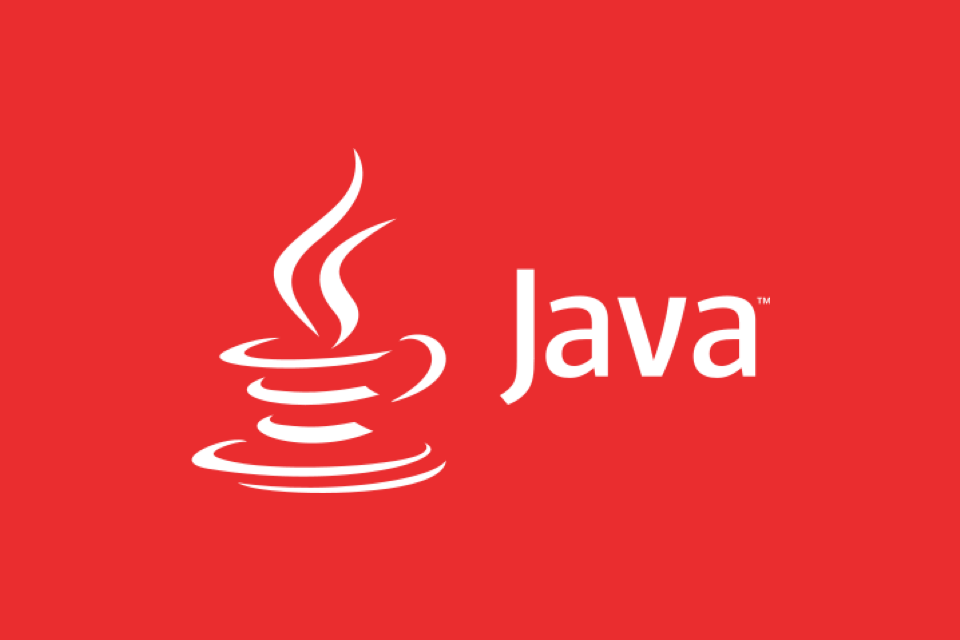Identifying and Preventing Memory Leaks in Java Applications
Jul 08, 2025 am 12:01 AMMemory leaks in Java refer to objects that are no longer used but cannot be recycled by GC because the reference is not released. Common scenarios include the collection class not being cleaned, the listener not being logged out, the cache is not invalidated, and the internal class holding external class references, etc. 1. Uncleaned collection classes will cause continuous memory occupancy. The solution is to clean up or use weak references regularly; 2. If the listener and callback are not logged out, the weak reference mechanism should be removed or used; 3. If the internal class holds external class references, it should use static internal classes and manually manage the references; 4. If the cache is not set to expire policies, it is recommended to use mature cache libraries such as Caffeine or Ehcache; in addition, you should also pay attention to log objects, ThreadLocal usage and ClassLoader uninstallation issues. To identify memory leaks, you need to combine heap memory trends and tool analysis, such as VisualVM, MAT, JProfiler, etc. Developing good habits during the development stage will help prevent memory leaks.

Although memory leaks in Java applications are not as obvious as C/C, once they occur, they often cause serious performance degradation or even crashes. The most common manifestation is that the longer the application runs, the more memory it consumes, and the OutOfMemoryError is eventually triggered.

What is a memory leak in Java?
Many people think that Java has a garbage collection mechanism (GC), so there will be no memory leaks. Actually, it is not the case. Memory leaks in Java refer to objects no longer being used, but because some references are not released, GC cannot recycle them. These "useless but accessible" objects will continue to occupy memory, causing problems over time.

Common scenarios include: collection class not being cleaned, listener not being logged out, cache not being invalidated, internal class holding external class references, etc.
How to identify memory leaks?
To discover memory leaks, you cannot rely solely on code searches, but you must judge them in combination with tools and phenomena.

- Observe the heap memory trend : If the memory in the old age does not drop significantly after Full GC, and the heap memory is on the rise, there is a memory leak likely.
- Use the memory analysis tool :
- VisualVM: Lightweight, suitable for local debugging
- Eclipse MAT (Memory Analyzer): Powerful, suitable for in-depth analysis of heap dump
- JProfiler: Commercial software, powerful visualization, suitable for complex problem positioning
These tools allow you to see which class instances grow abnormally, whether there are multiple ClassLoaders loading repeatedly, or a Map/Set that continues to grow but is not cleared.
Common memory leak types and response methods
-
Collection class not cleaned
- For example, a global
MaporListis constantly added without deleting old data - Workaround: Clean up or use weak references regularly (such as
WeakHashMap)
- For example, a global
-
Listeners and callbacks are not logged out
- Especially in event-driven systems, listeners are registered but not removed when components are destroyed
- Recommendation: Actively log out the listener at the end of the object life cycle, or use a weak reference listening mechanism
-
The inner class holds the outer class reference
- Non-static inner classes (such as anonymous classes) hold references to external classes by default
- If the inner class is held for a long time (such as submitting it to the thread pool as a task), the outer class will not be recycled
- Solution: Use static inner class instead and manually manage external class references
-
The cache has not set an expiration policy
- The cache is not set to an upper limit or is not automatically cleaned, which can easily become a memory black hole.
- It is recommended to use mature cache libraries such as Caffeine or Ehcache, which come with expiration and elimination mechanisms.
Details to pay attention to during development
- Don't treat log objects as something that "does not leak". If MDC data like Log4j is not cleared, it may also lead to the accumulation of local variables in threads.
- Be careful when using ThreadLocal, especially when using thread pools. If ThreadLocal variables are not cleaned when multiplexing threads, it is easy to cause data residues and memory accumulation across requests.
- For web applications, pay attention to whether ClassLoader is properly uninstalled during frequent deployment/rebooting. Otherwise, PermGen/Metaspace memory leak may occur.
Basically that's it. Memory leaks don't happen every time, but once they occur, the cost of troubleshooting is very high. It is easier to develop good habits in the development stage than to remedy them after they are launched.
The above is the detailed content of Identifying and Preventing Memory Leaks in Java Applications. For more information, please follow other related articles on the PHP Chinese website!

Hot AI Tools

Undress AI Tool
Undress images for free

Undresser.AI Undress
AI-powered app for creating realistic nude photos

AI Clothes Remover
Online AI tool for removing clothes from photos.

Clothoff.io
AI clothes remover

Video Face Swap
Swap faces in any video effortlessly with our completely free AI face swap tool!

Hot Article

Hot Tools

Notepad++7.3.1
Easy-to-use and free code editor

SublimeText3 Chinese version
Chinese version, very easy to use

Zend Studio 13.0.1
Powerful PHP integrated development environment

Dreamweaver CS6
Visual web development tools

SublimeText3 Mac version
God-level code editing software (SublimeText3)

Hot Topics
 Difference between HashMap and Hashtable?
Jun 24, 2025 pm 09:41 PM
Difference between HashMap and Hashtable?
Jun 24, 2025 pm 09:41 PM
The difference between HashMap and Hashtable is mainly reflected in thread safety, null value support and performance. 1. In terms of thread safety, Hashtable is thread-safe, and its methods are mostly synchronous methods, while HashMap does not perform synchronization processing, which is not thread-safe; 2. In terms of null value support, HashMap allows one null key and multiple null values, while Hashtable does not allow null keys or values, otherwise a NullPointerException will be thrown; 3. In terms of performance, HashMap is more efficient because there is no synchronization mechanism, and Hashtable has a low locking performance for each operation. It is recommended to use ConcurrentHashMap instead.
 What are static methods in interfaces?
Jun 24, 2025 pm 10:57 PM
What are static methods in interfaces?
Jun 24, 2025 pm 10:57 PM
StaticmethodsininterfaceswereintroducedinJava8toallowutilityfunctionswithintheinterfaceitself.BeforeJava8,suchfunctionsrequiredseparatehelperclasses,leadingtodisorganizedcode.Now,staticmethodsprovidethreekeybenefits:1)theyenableutilitymethodsdirectly
 How does JIT compiler optimize code?
Jun 24, 2025 pm 10:45 PM
How does JIT compiler optimize code?
Jun 24, 2025 pm 10:45 PM
The JIT compiler optimizes code through four methods: method inline, hot spot detection and compilation, type speculation and devirtualization, and redundant operation elimination. 1. Method inline reduces call overhead and inserts frequently called small methods directly into the call; 2. Hot spot detection and high-frequency code execution and centrally optimize it to save resources; 3. Type speculation collects runtime type information to achieve devirtualization calls, improving efficiency; 4. Redundant operations eliminate useless calculations and inspections based on operational data deletion, enhancing performance.
 What is an instance initializer block?
Jun 25, 2025 pm 12:21 PM
What is an instance initializer block?
Jun 25, 2025 pm 12:21 PM
Instance initialization blocks are used in Java to run initialization logic when creating objects, which are executed before the constructor. It is suitable for scenarios where multiple constructors share initialization code, complex field initialization, or anonymous class initialization scenarios. Unlike static initialization blocks, it is executed every time it is instantiated, while static initialization blocks only run once when the class is loaded.
 What is the Factory pattern?
Jun 24, 2025 pm 11:29 PM
What is the Factory pattern?
Jun 24, 2025 pm 11:29 PM
Factory mode is used to encapsulate object creation logic, making the code more flexible, easy to maintain, and loosely coupled. The core answer is: by centrally managing object creation logic, hiding implementation details, and supporting the creation of multiple related objects. The specific description is as follows: the factory mode handes object creation to a special factory class or method for processing, avoiding the use of newClass() directly; it is suitable for scenarios where multiple types of related objects are created, creation logic may change, and implementation details need to be hidden; for example, in the payment processor, Stripe, PayPal and other instances are created through factories; its implementation includes the object returned by the factory class based on input parameters, and all objects realize a common interface; common variants include simple factories, factory methods and abstract factories, which are suitable for different complexities.
 What is the `final` keyword for variables?
Jun 24, 2025 pm 07:29 PM
What is the `final` keyword for variables?
Jun 24, 2025 pm 07:29 PM
InJava,thefinalkeywordpreventsavariable’svaluefrombeingchangedafterassignment,butitsbehaviordiffersforprimitivesandobjectreferences.Forprimitivevariables,finalmakesthevalueconstant,asinfinalintMAX_SPEED=100;wherereassignmentcausesanerror.Forobjectref
 What is type casting?
Jun 24, 2025 pm 11:09 PM
What is type casting?
Jun 24, 2025 pm 11:09 PM
There are two types of conversion: implicit and explicit. 1. Implicit conversion occurs automatically, such as converting int to double; 2. Explicit conversion requires manual operation, such as using (int)myDouble. A case where type conversion is required includes processing user input, mathematical operations, or passing different types of values ??between functions. Issues that need to be noted are: turning floating-point numbers into integers will truncate the fractional part, turning large types into small types may lead to data loss, and some languages ??do not allow direct conversion of specific types. A proper understanding of language conversion rules helps avoid errors.
 Why do we need wrapper classes?
Jun 28, 2025 am 01:01 AM
Why do we need wrapper classes?
Jun 28, 2025 am 01:01 AM
Java uses wrapper classes because basic data types cannot directly participate in object-oriented operations, and object forms are often required in actual needs; 1. Collection classes can only store objects, such as Lists use automatic boxing to store numerical values; 2. Generics do not support basic types, and packaging classes must be used as type parameters; 3. Packaging classes can represent null values ??to distinguish unset or missing data; 4. Packaging classes provide practical methods such as string conversion to facilitate data parsing and processing, so in scenarios where these characteristics are needed, packaging classes are indispensable.






